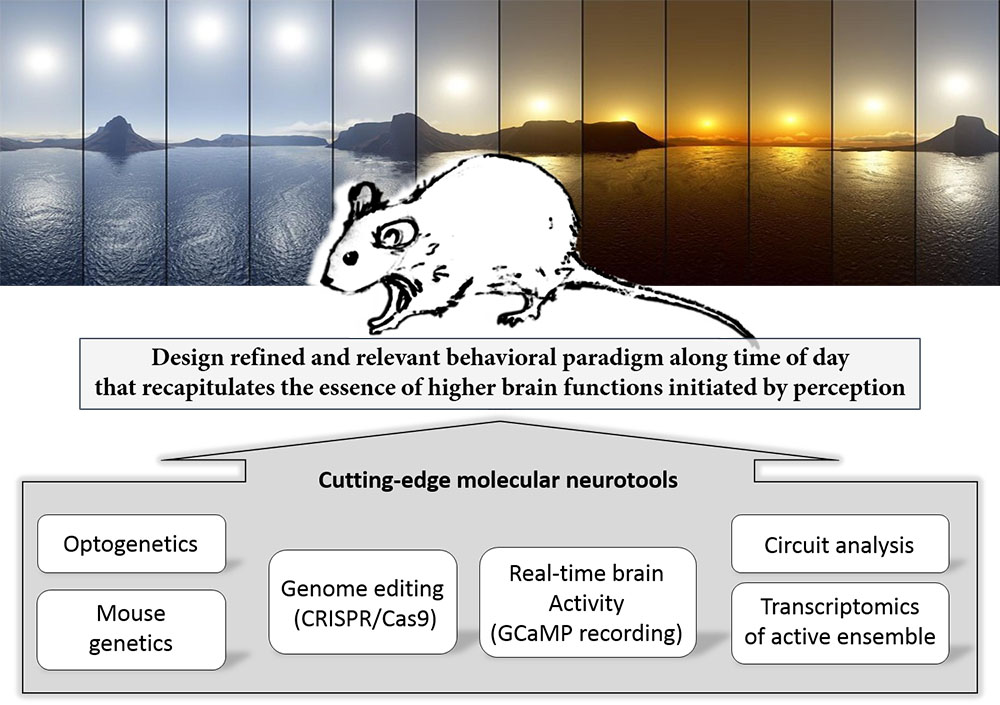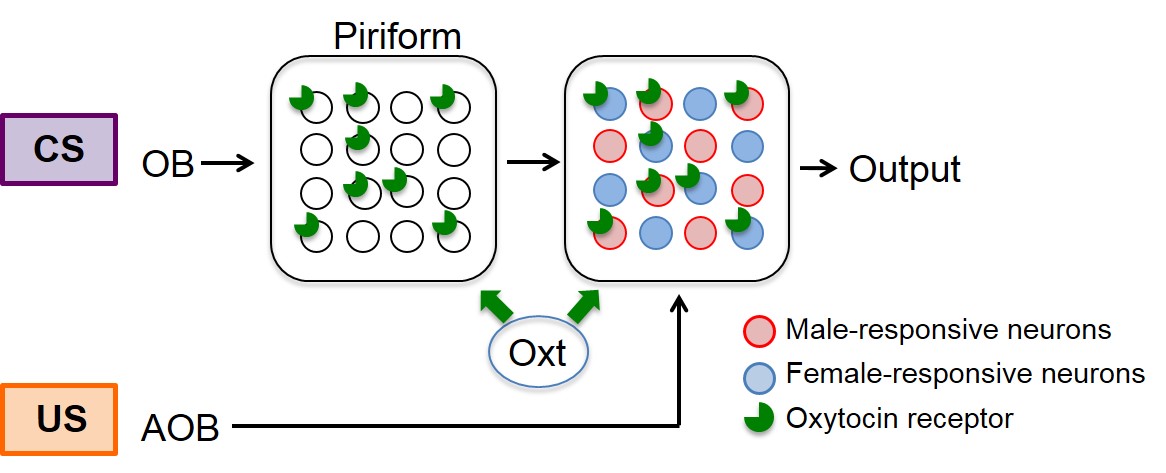한국어 실험실 소개는 여기에 있습니다. 분자세포생물학회 2017년 3월 학회지에 실린 내용입니다.
We aim to understand temporal organization of animal behavior and its underlying neuroscientific mechanisms

Recent progress in social neuroscience identified key nodes in brain circuitry processing socially relevant information. We will trace the connection between “the social brain” and the mammalian clock machinery in the brain and interrogate causal link between them. We will also investigate the contribution of clock-controlled neuromodulatory system on social behaviors. Furthermore, local molecular clock will be specifically tackled using mouse genetics and genome editing technique to address how electric activity conveyed through circuit and cell-intrinsic molecular machinery are harmonized to drive temporally organized social behaviors.

